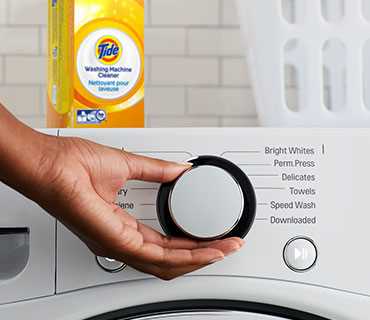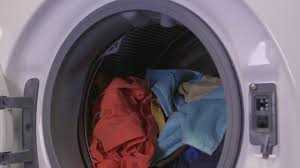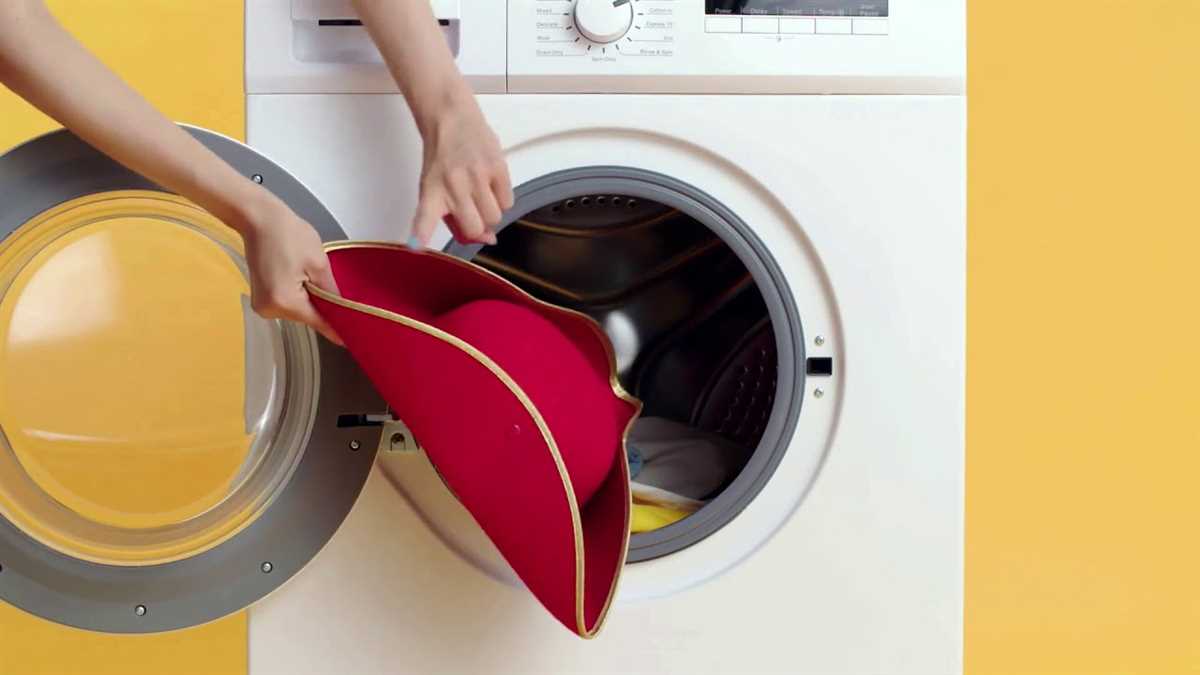




Are you a first-time user of a washing machine and feeling a little overwhelmed? Don’t worry, we’ve got you covered! Using a washing machine may seem daunting at first, but with some guidance, you’ll be able to handle your laundry like a pro in no time.
Before diving into the step-by-step process, it’s important to know the different parts of a washing machine. The main components you’ll encounter are the control panel, detergent dispenser, drum or tub, and the door or lid. Familiarizing yourself with these parts will make it easier for you to understand the directions.
Now let’s get started with the first step: sorting your laundry. It’s essential to separate your clothes into different loads based on color and fabric type. This helps prevent color bleeding and ensures that your clothes are washed correctly. Sort your laundry into piles of whites, darks, and delicates, so you’ll be ready for the next step.
Next, you’ll need to load the washing machine. Open the lid or door of the machine and place your sorted clothes into the drum. Make sure not to overload the machine, as this can prevent your clothes from getting cleaned properly. It’s recommended to fill the drum up to 3/4 of its capacity to allow for efficient washing.
Once your clothes are loaded, it’s time to add detergent. Check the manufacturer’s instructions for the recommended amount of detergent to use based on the load size. Carefully pour the detergent into the dispenser, which is usually located on the top or side of the machine. It’s important not to use too much detergent, as excessive soap can leave residue on your clothes.
With your laundry sorted, loaded, and detergent added, you can now select the appropriate wash cycle. The control panel on the washing machine will have various options and settings. Choose the cycle that best suits your laundry needs, whether it’s a regular, delicate, or quick wash. If you’re unsure, consult the user manual or look for fabric care symbols on your clothes to determine the correct cycle.
Step 1: Reading the User Manual
Before you start using your washing machine, it’s important to read the user manual provided by the manufacturer. The user manual contains essential information about the machine, its features, and how to operate it safely and effectively.
Here are some key reasons why you should read the user manual:
- Understanding the different settings and options: The user manual will explain the various settings and options available on your washing machine. This will help you choose the appropriate settings for different types of laundry and ensure optimal wash results.
- Operating instructions: The user manual will provide detailed instructions on how to use the washing machine properly. It will guide you through the entire process, from loading the laundry to selecting the correct program and starting the machine.
- Maintenance and troubleshooting: The user manual will provide information on how to clean and maintain your washing machine to ensure its longevity. It will also include troubleshooting tips for common issues that you may encounter.
Take the time to thoroughly read the user manual before using your washing machine for the first time. Familiarize yourself with the different sections and make note of any specific instructions or safety precautions. This will help you avoid mistakes and get the most out of your washing machine.
Understanding the Washing Machine’s Features and Functions

1. Control Panel: The control panel is where you will find the buttons and knobs to operate the washing machine. It is usually located on the top or front of the machine. The control panel allows you to select the desired washing cycle, temperature, and other settings.
2. Washing Cycle Options: Washing machines have different washing cycle options for different types of clothes. Common options include Normal, Delicate, Heavy Duty, and Quick Wash. Each cycle has its own time and intensity settings, so you can choose the one that best suits your needs.
3. Temperature Settings: Most washing machines have temperature settings that allow you to control the temperature of the water used in the wash. Hot water is great for removing tough stains, while cold water is ideal for delicate fabrics. Some machines also offer a warm water option.
4. Load Size: Washing machines come with load size options, which allow you to select how much laundry you are washing. It is important not to overload the machine as it can affect the cleaning performance and may cause damage to the machine.
5. Spin Speed: Spin speed determines how fast the machine’s drum rotates during the spin cycle. Higher spin speeds remove more water from the clothes, reducing drying time. However, some delicate fabrics may require a gentler spin.
6. Delay Start: This feature allows you to delay the start of the washing cycle. It is handy if you want to take advantage of off-peak electricity rates or if you want the machine to start while you’re away from home.
7. Add Garment: Some washing machines have an add garment feature, which allows you to pause the cycle and add any additional clothes you may have forgotten to put in initially. This feature is helpful if you frequently find stray socks or other items after starting the washing machine.
8. Child Lock: A child lock feature is important if you have young children at home. It prevents them from accidentally changing the settings or opening the door while the machine is running.
9. Display Panel: The display panel shows the selected settings and the remaining time for the washing cycle. It allows you to monitor the progress of the cycle and make any necessary adjustments.
10. Detergent Dispenser: Most washing machines have a detergent dispenser built into the machine. The dispenser is usually divided into compartments for liquid detergent, fabric softener, and bleach. Make sure to follow the manufacturer’s instructions for filling the dispenser.
By familiarizing yourself with these features and functions, you will be able to use your washing machine more effectively and get the best results from each wash cycle. Remember to always refer to the instruction manual provided with your specific washing machine for detailed information on its features and functions.
Step 2: Preparing the Laundry
Before you start using the washing machine, it’s important to properly prepare your laundry. Follow these steps to ensure that your clothes are ready for washing:
- Sort your clothes: Separate your laundry into different categories, such as whites, colors, and delicates. This will prevent colors from bleeding and protect delicate fabrics from damage.
- Check the care labels: Before putting any clothes into the washing machine, read the care labels to determine the appropriate settings and temperature for each item. This will help prevent any damage to your clothes.
- Empty pockets: Make sure to check all pockets and remove any items, like coins or keys, that could potentially damage the washing machine or your clothes during the wash cycle.
- Turn clothes inside out: To protect the colors and prevent abrasion, turn your clothes inside out before putting them in the washing machine.
- Loosen any dirt or stains: If you have any heavily soiled clothes or stains, pre-treat them before putting them in the washing machine. This can be done by applying a stain remover or soaking the garment in a solution.
- Load the washing machine: Finally, start loading the washing machine with the prepared clothes. Be sure not to overload the machine, as this can affect its performance and cleaning efficiency.
By following these preparation steps, you’ll ensure that your clothes are properly taken care of during the washing process and will come out clean and fresh.
Sorting and Prepping Your Clothes

Before you start using the washing machine, it’s important to sort and prepare your clothes properly. This will help ensure they are cleaned effectively and prevent any damage or discoloration.
1. Separate by Color

- Divide your clothes into light colors, dark colors, and whites.
- Wash light-colored clothes together to avoid any potential color bleeding.
- Wash dark-colored clothes separately to prevent them from staining lighter fabrics.
- White clothes should be washed separately or with very light-colored items to avoid any discoloration.
2. Check for Stains and Damage
- Inspect each item of clothing for stains or damage.
- Pre-treat any stains using a stain remover or a gentle detergent directly on the affected area.
- Mend any small tears or loose buttons before washing.
3. Empty Pockets
Make sure to empty all pockets of your clothing before washing. This will prevent any items like coins, paper, or lip balm from causing damage to your clothes or the washing machine.
4. Close Zippers and Fasten Buttons

Zip up all zippers and fasten buttons before putting your clothes in the washing machine. This will prevent them from snagging on other garments and reduce the risk of damage during the wash cycle.
5. Turn Clothes Inside Out
For delicate or printed garments, turn them inside out before washing. This will help protect the fabric and preserve any designs or prints.
6. Remove Delicate Items
- Set aside any delicate items, such as lace, silk, or wool, that require special care.
- Read the garment’s care label and follow the manufacturer’s instructions for washing these items.
- You may need to hand wash or use a delicate cycle for these items.
7. Sort by Fabric Type

- Separate your clothes by fabric type, such as cotton, synthetics, or delicates.
- This will help ensure that each garment receives the proper care and treatment during the wash cycle.
By following these steps to sort and prepare your clothes before using the washing machine, you can help extend the life of your garments and achieve clean, fresh results every time.
Step 3: Loading the Washing Machine

Properly loading your washing machine is essential to ensure effective cleaning and to prevent damage to your clothes. Follow these simple steps to load your washing machine correctly:
- Sort your laundry: Separate your clothes by colour, fabric type, and level of dirtiness. This will prevent colours from bleeding and ensure that delicate fabrics are not subjected to harsh washing conditions.
- Weigh your laundry: Check the maximum load limit of your washing machine and weigh your laundry to ensure it does not exceed the recommended weight. Overloading the machine can affect the quality of cleaning and put unnecessary strain on the machine.
- Open the washing machine lid or door: Depending on the type of washing machine you have, either lift the lid or open the door to access the drum.
- Place the laundry in the drum: Start by loading larger items such as bed sheets and towels at the bottom. Add smaller items such as shirts and pants on top. Be careful not to overload the drum to allow proper circulation of water and detergent during the wash cycle.
- Avoid tangling: Arrange your clothes evenly in the drum to prevent tangling. This will help with the overall cleaning process and minimize wrinkles.
- Add detergent: Refer to the manufacturer’s instructions on the correct amount of detergent to use. Typically, you will need to pour the recommended amount into the designated detergent compartment of the washing machine. Use a measuring cup or dispenser to ensure accurate measurement.
- Close the lid or door: Make sure the lid or door of the washing machine is securely closed before starting the wash cycle.
Following these steps will help you load your washing machine properly, ensuring optimal cleaning results and prolonging the lifespan of your clothes.
Properly Placing and Distributing the Laundry

Before using your washing machine for the first time, it is important to properly place and distribute the laundry. This will ensure that your clothes are washed thoroughly and that the machine operates efficiently.
- Sort your laundry: Before placing your clothes in the washing machine, sort them according to color and fabric type. This will prevent color bleeding and damage to delicate fabrics.
- Check pockets: Empty all pockets of clothing items to avoid any damage to the machine or clothes during the wash cycle.
- Pre-treat stains: If you have any stubborn stains on your clothes, pre-treat them with a stain remover or detergent before placing them in the washing machine.
- Load the machine: Open the washing machine lid or door and place your sorted and pre-treated clothes inside. Be careful not to overload the machine, as this can negatively impact the wash quality.
- Distribute the laundry: Evenly distribute the laundry inside the machine to ensure balanced weight distribution during the wash cycle. This will prevent the machine from vibrating excessively or becoming unbalanced.
- Separate large and small items: If you are washing large and small items together, separate them to prevent tangling and ensure a thorough wash.
- Refer to the washing machine’s user manual: If you are unsure of the specific loading instructions for your washing machine, refer to the user manual for guidance.
By following these steps, you can properly place and distribute your laundry in the washing machine, ensuring clean and well-maintained clothes.
Step 4: Selecting the Washing Cycle
Once you have loaded your laundry and added detergent, it’s time to select the appropriate washing cycle. The washing machine offers different cycles to accommodate various types of fabrics and soil levels. Here’s how you can select the washing cycle:
- Look for the “Cycle” or “Program” button on the washing machine’s control panel.
- Press the “Cycle” or “Program” button to cycle through the available options.
- Stop at the desired washing cycle that matches your laundry needs.
- Some common washing cycles include:
- Normal or Regular: This cycle is suitable for everyday laundry items like t-shirts, underwear, and socks.
- Delicate: Use this cycle for delicate fabrics such as silk, lace, and lingerie.
- Heavy Duty: This cycle is ideal for heavily soiled clothes or items like bed sheets and towels.
- Quick Wash: Select this cycle for smaller loads that need to be washed quickly.
- Refer to the washing machine’s user manual for a complete list of available cycles and their descriptions.
- Once you have selected the desired washing cycle, press the “Start” or “On” button to begin the washing process.
It’s important to choose the appropriate washing cycle to ensure clean and fresh laundry. Using the wrong cycle may result in damage to your clothes or ineffective cleaning.
FAQ
How do I use a washing machine for the first time?
To use a washing machine for the first time, start by reading the instruction manual that came with the machine. Familiarize yourself with the different settings and buttons. Next, sort your laundry by color, fabric type, and washing instructions. Load the washing machine with the appropriate amount of detergent and set the water temperature and cycle based on the recommendations for your specific type of laundry. Finally, start the machine and wait for it to complete the cycle before removing your clean clothes.
Do I need to use a specific type of detergent in the washing machine?
Yes, it is important to use a detergent that is designed for use in a washing machine. Using the wrong type of detergent can affect the cleanliness of your clothes and can cause damage to the machine. There are various types of detergents available, including liquid, powder, and pods. Read the labels on the detergent packaging to ensure it is suitable for use in a washing machine.
What temperature should I set the washing machine to?
The temperature you should set the washing machine to will depend on the type of fabric you are washing. Check the care label on your clothes to determine the recommended washing temperature. Generally, cold water is suitable for delicate fabrics, while warmer temperatures are more effective for removing stains and sanitizing heavily soiled items. Most washing machines have temperature options such as hot, warm, or cold, so choose the one that is appropriate for your laundry.
How much detergent should I use in the washing machine?
The amount of detergent you should use in the washing machine will depend on the size of the load and the dirtiness of the clothes. It is best to follow the manufacturer’s instructions on the detergent packaging for the recommended dosage. Some machines also have markings on the detergent drawer to help you determine the correct amount. Using too much detergent can lead to excess sudsing and can cause problems with rinsing, while using too little may not effectively clean your clothes.
Can I wash different types of fabrics together in the washing machine?
It is generally recommended to wash different types of fabrics separately to prevent any damage or color bleeding. However, some machines have settings that allow you to wash a variety of fabrics together. If you choose to mix different types of fabrics, make sure to select a gentle cycle and use a lower speed to reduce the risk of damage. Always check the care labels on your clothing to ensure they can be washed together and follow any specific instructions for each garment.
What is the first step to using a washing machine?
The first step to using a washing machine is to sort your laundry and separate them according to color and fabric type.














